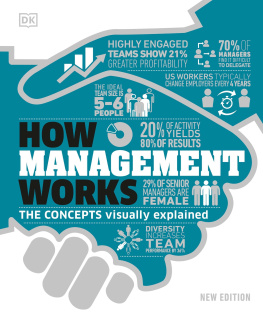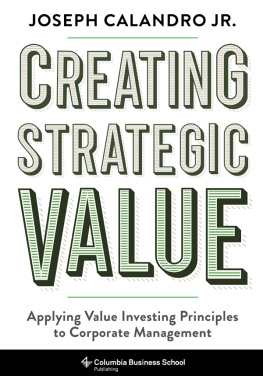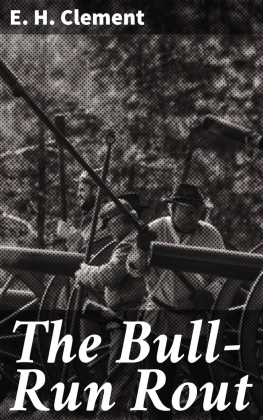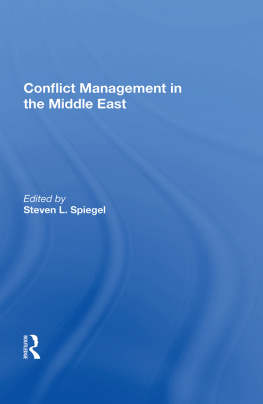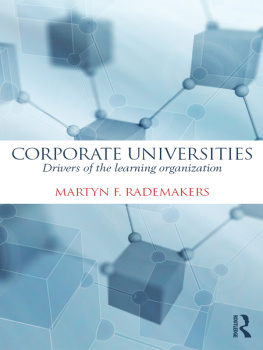Corporate Conflict Management
Concepts and Skills
Eirene Leela Rout
Faculty, Management Studies
Birla Institute of Technology & Science
Pilani
Nelson Omiko
General Manager
Amber Business Development Services
Muscat, Oman
Delhi-110001
2007
Corporate Conflict ManagementC oncepts and Skills
Eirene Leela Rout and Nelson Omiko
2007 by PHI Learning Private Limited, New Delhi. All rights reserved. No part of this book may be reproduced in any form, by mimeograph or any other means, without permission in writing from the publisher.
ISBN-978-81-203-3279-9
The export rights of this book are vested solely with the publisher.
Published by Asoke K. Ghosh, PHI Learning Private Limited, M-97, Connaught Circus, New Delhi-110001 and Printed by Mudrak, 30-A, Patparganj, Delhi-110091.
Contents
Preface ix
Acknowledgements xi
Learning Objectives 1
1.1 Different Schools of Thought on Conflict
1.2 Understanding Conflict
1.3 Components of Conflict
1.4 Perspectives of Conflict
1.5 Types of Conflict
1.6 Models of Conflict
1.6.1 Process Model
1.6.2 Structural Model
1.7 Functional and Dysfunctional Conflicts
1.7.1 Functional Conflict
1.7.2 Dysfunctional Conflict
1.8 Conflict and Performance
1.9 Relationship between Conflict and Performance in Team
1.9.1 Relationship between Relationship/Affective Conflict and Performance
1.9.2 Relationship between Process/Procedural Conflict and Performance
1.9.3 Relationship between Task/Cognitive Conflict and Performance
Summary 21
Questions 22
References 22
Learning Objectives 24
2.1 Intra-personal Conflict
2.1.1 Conflict due to Frustration
2.1.2 Conflict due to Goal
2.1.3 Role Conflict and Ambiguity
2.2 Interpersonal Conflict
2.3 Group/Team Conflict
2.3.1 Behavioural Signs of Conflict in Groups
2.3.2 Work Force Diversity and Conflict in Groups
2.3.3 Conflict and Group Decision-Making
2.3.4 Conflict and Role of Communication in Group
2.4 Organizational Conflict
2.4.1 Organizational Conflict Process
Summary 52
Questions 53
References 53
Learning Objectives 56
3.1 Sources of Intra-personal Conflict
3.1.1 Cognitive Dissonance
3.1.2 Neurotic Tendencies
3.2 Sources of Interpersonal Conflict
3.2.1 Relationship Rules
3.2.2 Personality, Gender and Age Related Issues
3.2.3 Evaluating Others
3.2.4 Evaluating the Situation
3.2.5 Role Incompatibility
3.2.6 Changes and Stress Resulting from Environmental Factors
3.2.7 Difficult Boss
3.2.8 Difficulties with Colleagues
3.3 Sources of Group Conflict
3.4 Sources of Organizational Conflict
Summary 77
Questions 78
References 78
Learning Objectives 81
4.1 The Thomas Conflict Resolution Approach
4.2 Behavioural Style and Conflict Handling
4.2.1 Communication Orientation of Each Style
4.3 The Cosier Schank Model of Conflict Resolution
4.4 Collaboration and Conflict Resolution
4.5 Dealing with Difficult Subordinates
4.6 Dealing with Difficult Boss and Colleagues
4.7 One-to-One Dispute Resolution
4.8 A Case Study on Avoidance as a Method of Conflict Resolution
Summary 110
Questions 111
References 111
Learning Objectives 114
5.1 Techniques to Resolve Team Conflict
5.2 Strategies to Resolve Organizational Conflict
5.3 Effective Listening and Dialogue Skills
5.4 Humour and Conflict Resolution
Summary 128
Questions 129
References 129
Learning Objectives 133
6.1 Types of Negotiations
6.1.1 Distributive Negotiations
6.1.2 Integrative Negotiations
6.1.3 Attitudinal Structuring
6.1.4 Intra-organizational Negotiations
6.2 Negotiation Process
6.2.1 Preparation
6.2.2 Developing and Choosing a Strategy
6.2.3 Opening Moves
6.2.4 Bargaining and Problem Solving
6.2.5 Closure and Implementation
6.3 Factors Responsible for Making Negotiation Successful
6.4 Tricks Used in Negotiation Process
6.4.1 The Four Control Tactics
6.4.2 The Seven Pressure Tactics
6.4.3 The Nine Trap Tactics
6.5 Getting and Keeping the Psychological Advantage
6.6 Methods to Counter Negotiating Techniques
6.7 Issues in Negotiation
6.7.1 Negotiating with Difficult People
6.7.2 Gender Differences in Negotiation
6.7.3 Cultural Factors in Negotiation
Summary 162
Questions 162
References 163
Learning Objectives 165
7.1 Mediation
7.2 Arbitration
7.3 Alternative Dispute Resolution (A dr )
7.4 Managerial Dispute Resolution
Summary 178
Questions 178
References 178
Learning Objectives 181
8.1 Questionnaire to Assess Potential Conflict 182
8.2 Check List for Sources of Conflict
8.3 Conflict Dynamics Analysis
8.4 Summary of Conflict Analysis
8.5 Analysis of Consequences
8.6 Understanding Conflict Outcomes and Participants Intentions
8.7 Selection and Implementation of Conflict Resolution Strategies
8.8 Report Writing and Feedback
Summary 192
Questions 192
Annexure
Learning Objectives 197
9.1 Assertive Behaviour and Conflict Handling
9.2 Perception and Conflict
9.3 Understanding Self: Johari Window
9.4 Transactional Analysis and Conflict Handling
Summary 222
Questions 222
References 223
Learning Objectives 224
10.1 Need for Increasing Conflict in Organizations
10.2 Conflict and Creativity
10.3 Stimulating Conflict through Idea Generation
10.4 Stimulating Conflict by Motivating Individual Employees
10.5 Introducing Conflict and Making Work Environment Creative
10.6 Inspiring Creativity by Resolving Workplace Disagreements
Summary 242
Questions 242
References 243
Learning Objectives 244
11.1 Effect of Conflict on Organizational Performance
11.2 Cost Viable and Effective Methodology to Assess
Conflict
11.3 Dimensions of Costs of Conflict
Summary 252
Questions 252
References 253
Learning Objectives 254
12.1 Personality Conflict in Workplace
12.2 Personality Types and Response to Situations
12.3 Conflict Handling Styles of Different Types of Personalities
12.4 Impact of Conflict on Different Personality Traits
12.5 Recognizing and Handling of Problem Behaviours
Summary 274
Questions 274
References 274
Preface
We are glad to place this volume of Corporate Conflict Management: Concepts and Skills in the hands of esteemed teachers, students, researcher scholars, and executive managers of the subject. This book has been carefully authored keeping in mind the specific requirements of executive managers and scholars in different universities who are aspiring to become executives. The students of MBA as well as those aspiring to pursue similar professional courses will find this book very interesting and valuable to face a prospective employer.


